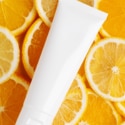Keep reading to know...
Glycolic acid is a very powerful skincare ingredient that has to be used carefully. Here’s a comprehensive guide to how to avoid mistakes while using glycolic acid!
In recent times, glycolic acid has become a wildly popular ingredient in skincare because of its ability to exfoliate and improve skin texture. When used correctly, it can deliver phenomenal results to clear pores, smooth fine wrinkles, improve skin tone, fade dark patches and sun damage, and hydrate skin. However, it’s a tricky acid that can cause irritation when not used correctly.
If you’ve wondered if glycolic acid is for you, you’re in the right place. Bookmark and share this one-stop-shop guide about glycolic acid.
What is Glycolic Acid?
Glycolic acid is an alpha-hydroxy acid (AHA) derived from sugarcane. It has the smallest-sized molecules of all the AHAs, which allows it to absorb into the skin and exfoliate it better than other AHAs. Glycolic acid improves skin texture by removing the top layer of dead skin cells. According to studies, glycolic acid has antibacterial and antioxidant activity, which can also help improve your skin’s appearance. It triggers your skin to make more collagen as well. Collagen is the protein that makes skin firm, plump, and elastic.
How to Avoid Mistakes While Using Glycolic Acid?
While it’s safe to use glycolic acid, some side effects can occur if you overload sensitive skin. Common side effects include swelling, itching, and burning sensation that typically are temporary. However, if you experience redness or irritation, discontinue temporarily and consult a dermatologist.
When you begin using glycolic, observe your skin closely. It’s important to note that peeling of your skin is normal during the exfoliation process. Avoid picking or peeling at the skin. Seek a medical professional if you have underlying skin conditions or additional concerns.
While it’s safe to use glycolic acid, some side effects can occur if you overload sensitive skin. Common side effects include swelling, itching, and burning sensation that typically are temporary. However, if you experience redness or irritation, discontinue temporarily and consult a dermatologist.
When you begin using glycolic, observe your skin closely. It’s important to note that peeling of your skin is normal during the exfoliation process. Avoid picking or peeling at the skin. Seek a medical professional if you have underlying skin conditions or additional concerns.
- Use Gentle Formulations: If you are using glycolic acid for the first time, select products that have added calming ingredients such as aloe vera or hyaluronic acid. These soothing ingredients will help mitigate the harshness of glycolic acid.
- Consider Your Skin Type: Start with a lower concentration of glycolic acid (2-5%), especially for sensitive skin. If you have oily or acne-prone skin, you can gradually increase the concentration.
- Patch Test: Before wider application, it’s advisable to test it on a small patch of skin to check for sensitivity. After a few days, you can progress to your entire face.
- Start Slowly: Adjust your skincare routine based on your skin's reaction to glycolic acid, and take regular breaks from its use.
- Nighttime Use: Glycolic acid increases skin sensitivity to the sun. Use glycolic acid at night and wear sunscreen diligently during the day!
- Hydration: Glycolic acid can dry your skin, so make sure you are using a hydrating moisturiser.
- Avoid Over-Exfoliation: Don’t go overboard using products with glycolic acid. Read and follow the product’s application instructions closely to avoid irritation.
- Sensitive Areas: Be extra cautious when applying glycolic acid close to your eyes and mouth.
- Overloading your Skin: Be careful when using glycolic acid and active ingredients like retinoids or vitamin C. Use them at different times of the day or on alternate days.
- Managing Side Effects of Glycolic Acid:
While it’s safe to use glycolic acid, some side effects can occur if you overload sensitive skin. Common side effects include swelling, itching, and burning sensation that typically are temporary. However, if you experience redness or irritation, discontinue temporarily and consult a dermatologist.
When you begin using glycolic, observe your skin closely. It’s important to note that peeling of your skin is normal during the exfoliation process. Avoid picking or peeling at the skin. Seek a medical professional if you have underlying skin conditions or additional concerns.











 BePicks
BePicks







 Privacy Notice
Privacy Notice